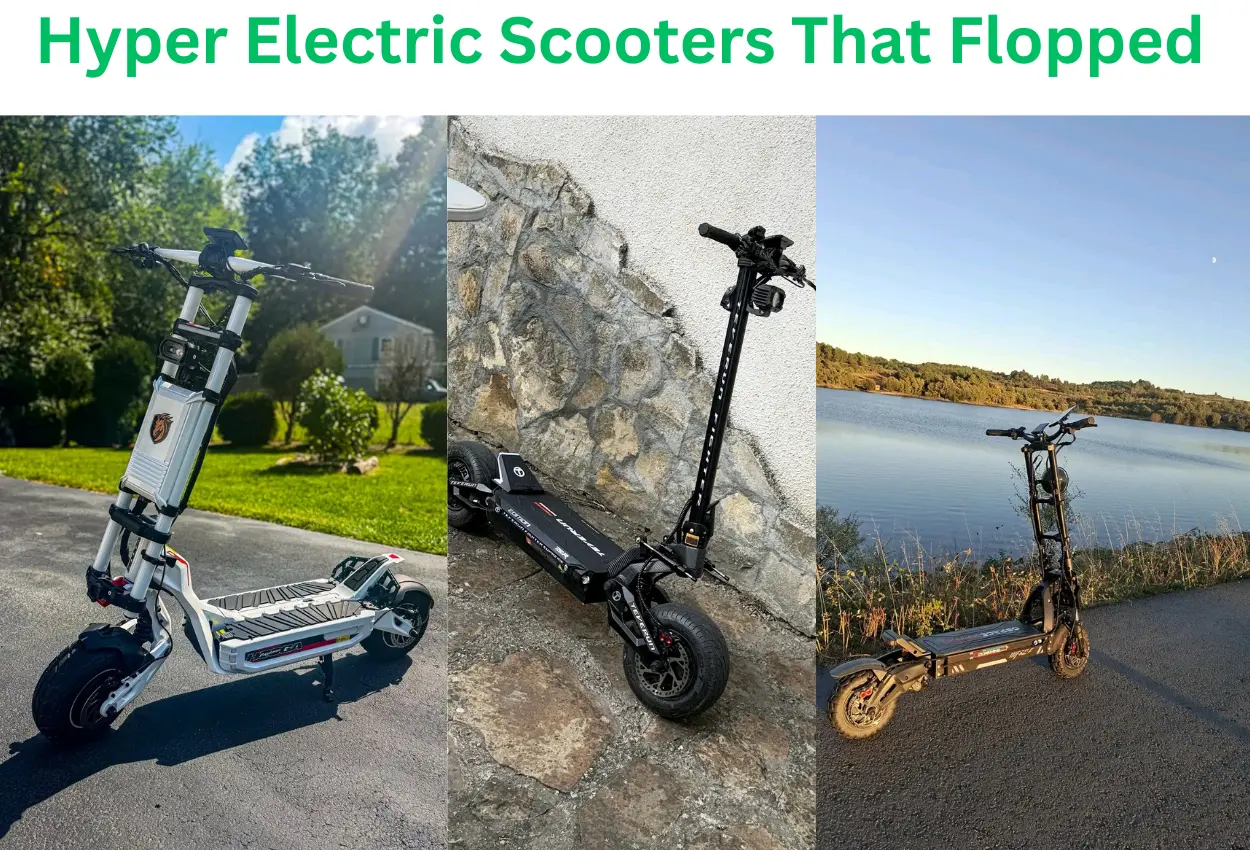Picture this: a new wave of electric scooters bursts onto the scene in 2025, hyped as the ultimate urban game-changers: lightning-fast, eco-chic, and ready to make car commutes obsolete.
Crowdfunding campaigns exploded, influencers raced them across social media, and city dwellers lined up for a taste of two-wheeled freedom.
But for seven of these heavily touted newcomers, the hype fizzled fast, with sales tanking despite the fanfare.
Were they priced like luxury cars? Did their flashy features flop on real streets? Or did unseen glitches and market missteps trip them up?
We dive into the surprising stumbles behind these high-profile flops, exposing what went wrong and what it means for the future of urban mobility.
Visual Representation Of The Reasons Why These Scooter Sales Flopped

7 Electric Scooters Whose Hype Machine Failed
Hooga Daytona
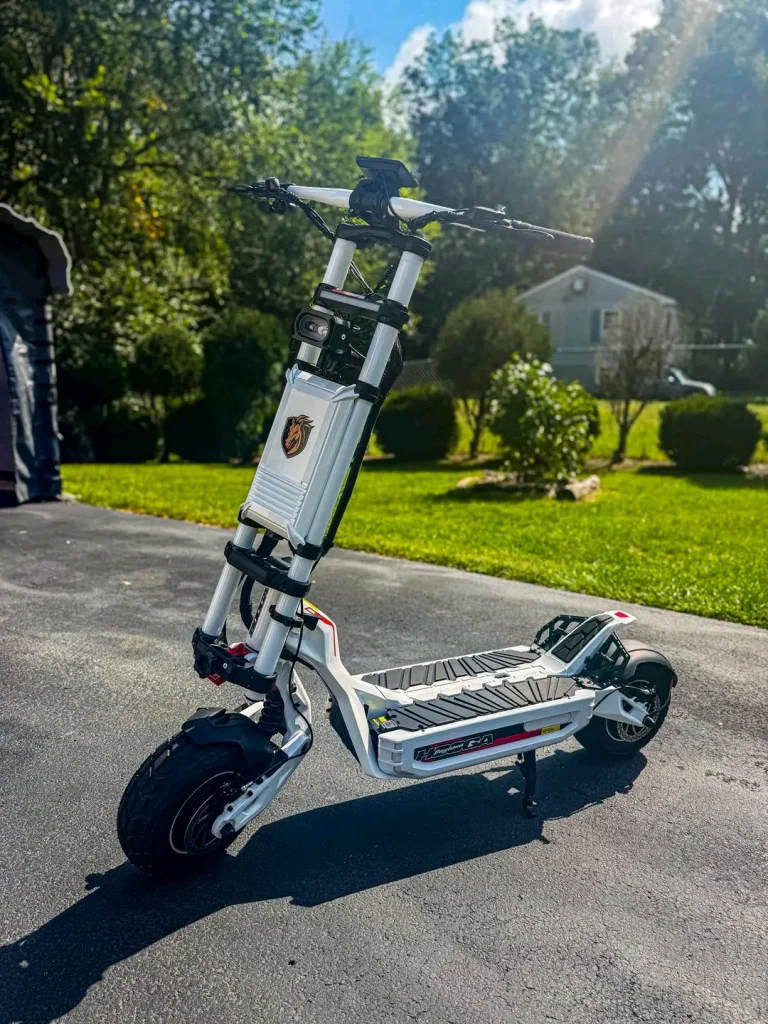
When VoroMotors unveiled the Hooga Daytona in mid-2025, it was positioned as the ultimate evolution in electric hyper-scooters.
It came with a dual-stem monster blending the raw aggression of a Kaabo Wolf King with refined engineering to sidestep the chronic headaches of its predecessors, like leaky hydraulic brakes and erratic power delivery.
At $3,695, it packed dual 5,000W motors, a 72V 40Ah LG battery promising up to 70 mph (with manufacturer claims hitting 80), and a rugged all-terrain build that had enthusiasts drooling over TikTok renders and pre-order waitlists.
Early buzz painted it as the “cheapest most powerful” option in its class, a game-changer for off-road daredevils and speed junkies tired of overpriced Dualtrons.
But just months after launch, the Daytona hit a wall of real-world gripes that turned showroom sizzle into garage shelf-warmers. What derailed this would-be speed king?
High Price
In a market flooded with sub-$2,000 commuters, shelling out nearly four grand for a 152-pound behemoth felt like overkill for all but the hardcore.
Sure, it undercut some rivals, but for casual riders eyeing urban zips rather than highway hauls, it screamed “impulse regret.”
Add in its non-portable heft—no quick fold for apartment stairs or subway stashes—and a glacial 10-hour charge time (halvable with a second charger, but who packs extras?), and the Daydream of effortless mobility evaporated fast.
Reviewers loved the blistering acceleration and DOT-grade hydraulic brakes that could haul it down from 70 mph without drama, but admitted it wasn’t for newbies: the reverse-trigger throttle and deep settings menu demanded a user’s manual just to unlock basics, alienating anyone not already versed in hyper-scooter quirks.
Early Hardware Hiccups
Then came the gremlins under the hood.
Voro adjusted 2025 specs downward for realism [basing claims on a 200-pound rider rather than featherweights] to avoid hype backlash, but that transparency couldn’t mask early hardware hiccups.
Reports trickled in of units dying too soon: no power light, sudden voltage drops leaving gauges dead, and scooters so draggy they were a workout to push home.
App connectivity was another sore spot on social: Bluetooth pairing flaked out, locking throttles at a pathetic 5% output, and stranding riders mid-commute.
Battery woes loomed large too; while the 40Ah pack delivered consistent juice in tests, critics griped it felt undersized for the scooter’s thirst, capping real-world range at 40-50 miles under load and fueling whispers of inefficiency.
By October 2025, sales chatter had cooled from feverish waitlists to cautious side-eyes.
The Daytona nailed the thrill factor; wheelie-popping torque and pothole-munching suspension that made off-road romps epic, but at what cost?
For a niche toy priced like a used motorcycle, these launch stumbles amplified the risks, leaving it more a collector’s curiosity than a mass-market must-have. If Voro irons out the kinks with firmware updates and battery tweaks, it could roar back. Until then, it’s a cautionary tale: even beasts need taming before they conquer the streets.
YUME Predator
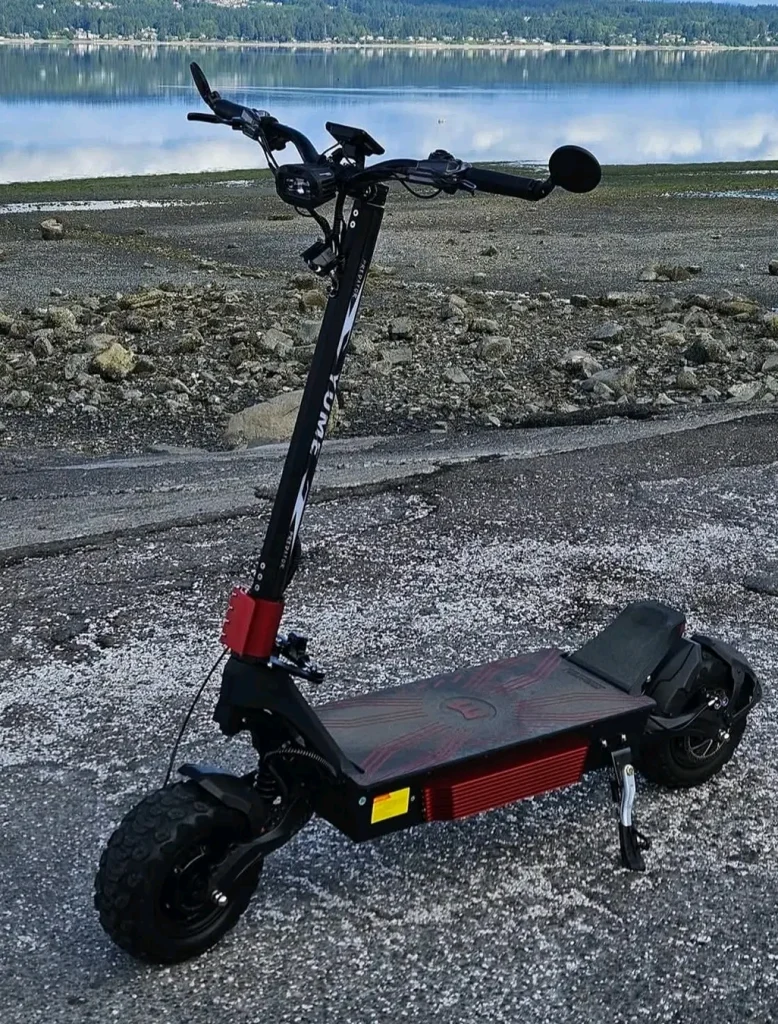
The YUME Predator roared in with dual 4000W motors, a 72V 50Ah battery for up to 63 mph speeds, and massive 13-inch all-terrain tires that screamed adventure.
Reviewers raved about its custom-tuned water-cooled controllers, a standout feature that tamed heat during blistering acceleration and long hauls, preventing the controller meltdowns plaguing lesser hyper-scooters.
At $3,699, it undercut pricier rivals while delivering torque that popped wheelies on demand.
Yet sales lagged behind the hype, with units piling up as buyers balked at practical pitfalls.
Early adopters loved the raw thrill but warned of real-world drags that dimmed its appeal.
Here’s how three key flaws turned a potential best-seller into a shelf queen:
The Weight That Grounded Urban Riders
At 170 pounds, the Predator felt more like a dirt bike than a scooter.
Casual commuters shunned it for daily use, as lugging it up stairs or into apartments became a two-person chore.
Parking woes compounded the issue; its bulk made tight maneuvers in crowded garages a nightmare, alienating city dwellers who prized fold-and-go ease.
Even off-road fans hesitated, citing the strain on arms during frequent lifts over obstacles. This heft slashed impulse buys, confining sales to a niche of garage-stored beasts rather than versatile daily drivers.
IP54 Rating’s Splashy Shortcomings
An IP54 rating offered basic dust and splash protection, but it crumbled under real rain or puddles.
Buyers in wet climates skipped it, fearing fried electronics from anything beyond a light drizzle, unlike IP67 rivals that braved downpours unscathed.
Forum gripes highlighted water ingress during washes, leading to warranty claims and repair hassles.
This half-measure spooked risk-averse shoppers, who opted for weatherproof alternatives to avoid soggy regrets and downtime.
In a market demanding all-season reliability, the Predator’s rating signaled “fair weather only,” capping its reach.
Price Tag That Priced Out the Masses
Priced at $3,699, the Predator demanded a premium for its power, but that steep entry deterred budget-conscious enthusiasts eyeing sub-$2,000 commuters.
While cheaper than some ultra-high-end options, it still felt extravagant for features like water-cooling that shone brightest in extreme use.
Financing stretched payments, yet upfront costs scared off fence-sitters, comparing it to lighter, cheaper all-rounders.
Economic headwinds in 2025 amplified sticker shock, funneling buyers to value-packed mid-tiers. This positioning locked it into a luxury lane with limited traffic, starving volume sales.
Dualtron Ultra 2
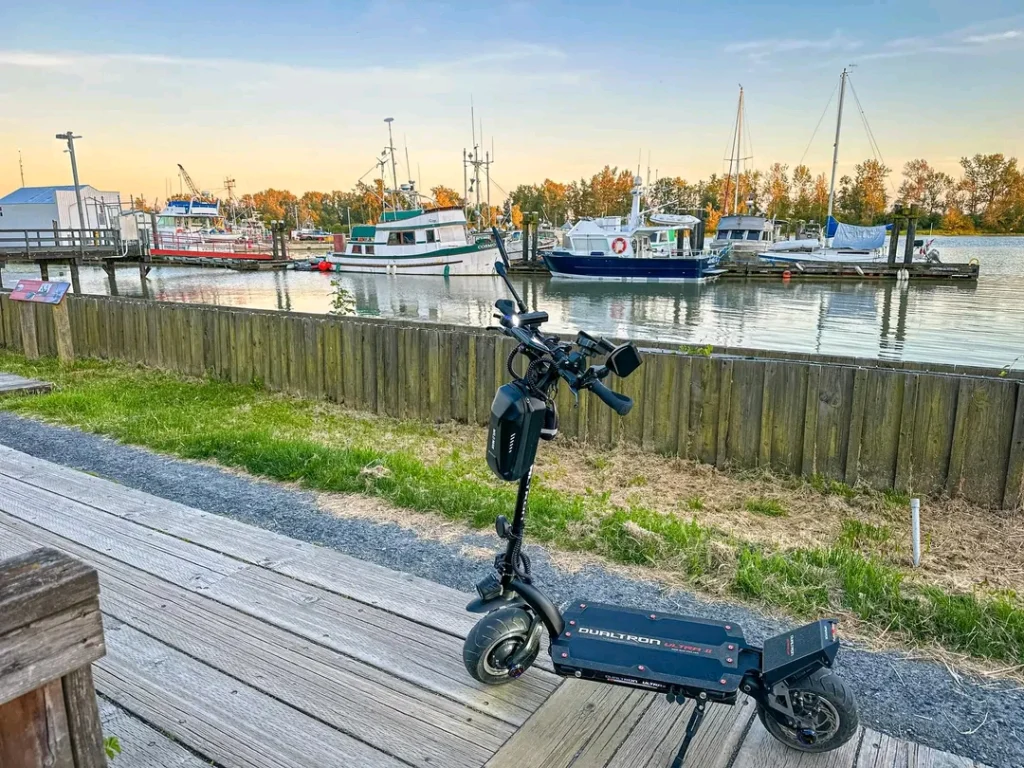
Relaunched in 2025 as the “Legendary Off-Road Machine,” the Dualtron Ultra 2 packed dual 2000W motors, a 72V 40Ah battery for 60+ mph bursts, and 11-inch knobby tires built for mud-slinging adventures.
Priced around $2,600-$3,000, it drew eyes with its beefy 180mm ground clearance and torque that tackled steep inclines like a champ, positioning it as a budget beast for thrill-seekers ditching dirt bikes.
Early renders sparked forum frenzy, with off-road junkies hyping its raw power over polished commuters.
But by mid-year, sales stalled amid whispers of “yesterday’s tech,” as buyers pivoted to sleeker rivals.
Die-hard fans praised its hill-crushing grit, yet practical pains turned it from wishlist staple to clearance curiosity.
Three glaring gaps explain the buzz-to-bust slide:
Square Wave Controllers’ Noisy, Inefficient Ride
Square wave controllers delivered punchy power but buzzed like angry bees and guzzled battery faster than sine wave upgrades in competitors.
Riders griped about jerky starts and reduced range; real-world tests clocked 20% less mileage under load, making long hauls a drag.
In 2025’s efficiency-obsessed market, this dated tech screamed “budget cut,” scaring off eco-commuters and performance purists who flocked to smoother, quieter alternatives like Teverun models.
The noise alone amplified fatigue on extended rides, slashing appeal for daily warriors and funneling sales to refined rivals.
Rubber Cartridge Suspension’s Bumpy Compromise
Rubber cartridge shocks absorbed basic jolts but buckled on rough terrain, transmitting harsh vibes that rattled bones over potholes or trails.
Unlike air or oil setups in newer scooters, they lacked tunable damping, leading to bottom-outs on jumps and a “floaty” feel at speed that spooked beginners.
Forum vets called it a “dealbreaker for off-road,” with stem play and squeaks compounding the chaos during tweaks.
This clunky ride deterred adventure seekers craving plush control, positioning the Ultra 2 as a relic in a plush-suspension era and starving it of repeat buyers.
Lack of Water Protection’s Fair-Weather Fiasco
With no robust IP rating, barely splash-proof at best, the Ultra 2 faltered in drizzle, risking fried boards from ingress during washes or light rain.
Urban riders in rainy zones ghosted it, haunted by tales of warranty woes and shop visits after puddle plunges, unlike IP65+ foes that laughed off storms.
This vulnerability hit hard in variable climates, branding it a “summer-only toy” and capping sales to dry-weather diehards.
In a year of all-season demands, the exposure gap amplified fears of downtime, driving fence-sitters to weather-ready options instead.
Teverun Fighter Supreme 7260R
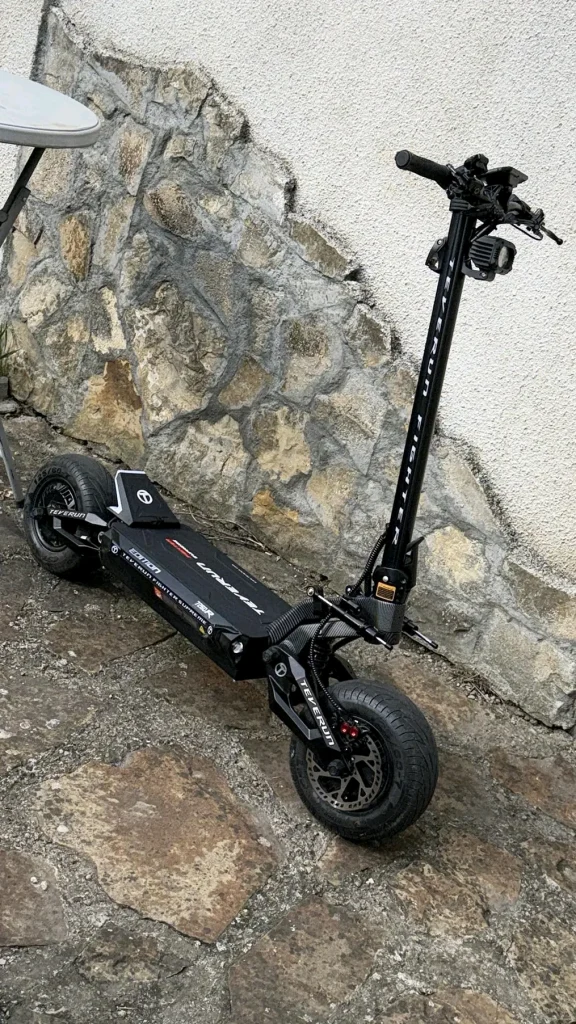
The Teverun Fighter Supreme 7260R stormed the market as a hyper-scooter hybrid, fusing Dualtron’s brute force with Blade’s sleek tech in a collaboration that promised to eclipse rivals.
Dual 5000W motors (peaking at 15,120W), a 72V 60Ah battery for 120 km/h sprints and 200 km range, plus 13-inch tubeless tires and smart NFC app integration had forums ablaze with pre-launch fever.
Priced at $3,999, it targeted adrenaline addicts craving off-road dominance and urban escapes, complete with RGB lighting and passive keyless entry for that futuristic flair.
Thrill-seekers raved about its hill-conquering torque and fast-charge prowess, but sales fizzled by summer as real-rider reports exposed cracks in the hype. What turned this “world’s No.1 e-scooter” into a cautionary tale?
Wobble Monster
Speeds over 40 mph unleashed violent steering shakes and wobbles, turning confident cruises into white-knuckle survival tests. Refer to this social post to begin with.
Even the V4 model’s dual steering dampers—touted as a fix—merely masked the issue, failing to root out the flawed stem geometry that shifted weight forward of the axis.
Beginners bailed instantly, while veterans dumped it after one crash-prone ride, citing the shakes as a “dealbreaker” for safe highway use.
This flaw amplified safety fears in a regulation-tight 2025, scaring off families and commuters who prioritized control over chaos, and slashing impulse buys to niche daredevils only.
Hefty Bulk
Tipping the scales at 141 pounds, the 7260R demanded a truck for transport, not a quick fold into an apartment or subway.
Urban riders ghosted it, frustrated by the arm-straining lifts over curbs or stairs, especially in walk-up buildings where lighter commuters ruled.
Off-road fans loved the stability at low speeds but cursed the dead weight during hikes or storage, turning weekend warriors into reluctant garage-hoarders.
In a market favoring versatile 50-80 pound options, this tank-like mass confined sales to a tiny segment of power-obsessed owners with ample space and muscle.
Wallet-Busting Price
At nearly $4,000, the Supreme felt like a splurge for specs that echoed cheaper Teverun siblings like the Fighter 11+.
Economic squeezes in 2025 pushed buyers toward sub-$2,500 alternatives with similar ranges but fewer frills, viewing the NFC gimmicks and carbon accents as overkill.
Financing eased the sting for some, but upfront shock deterred fence-sitters scanning budgets, especially amid whispers of reliability risks inflating long-term costs.
This elite pricing locked it out of mass appeal, funneling demand to “good enough” mid-tiers and leaving stockists with unsold units by fall.
GSPACE Mars GTR
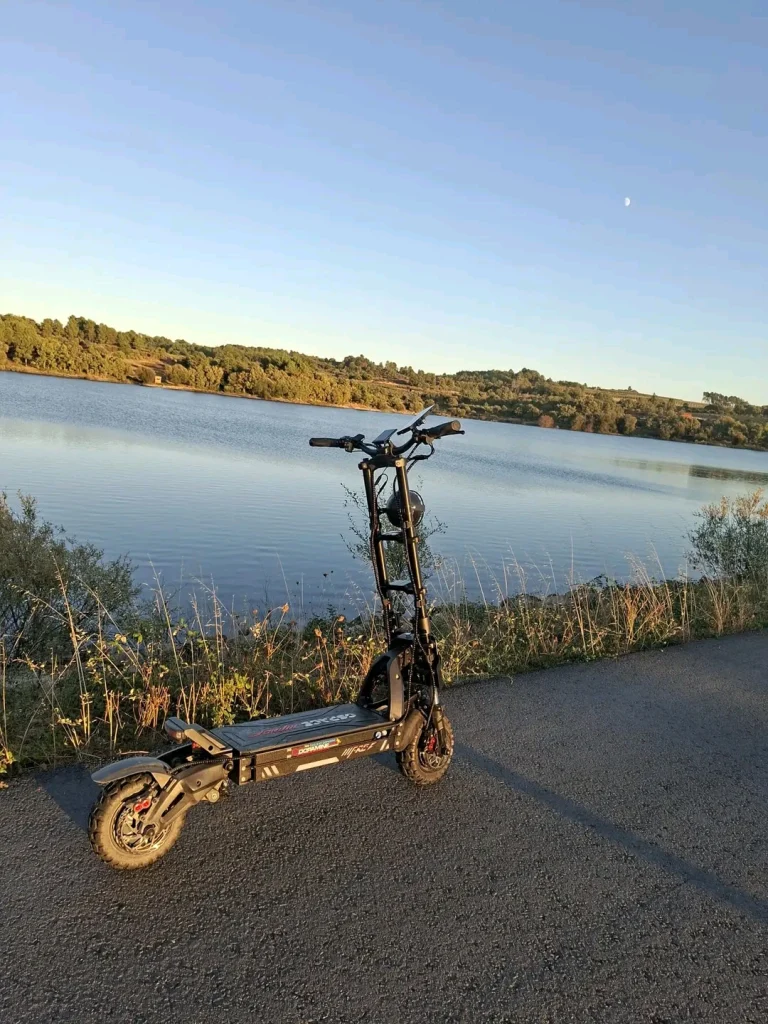
The GSPACE Mars 11 GTR charged into the hyper-scooter arena with dual 2000W motors, a 72V 45Ah Samsung 21700 battery delivering up to 69 mph top speeds (unlocked) and 105 miles of range, plus rugged 11-inch tubeless off-road tires for trail-taming traction.
Priced at $3,399, it lured adventure seekers with groundbreaking double wishbone and multi-link suspension for buttery stability, IP66 waterproofing that braved monsoons, and an aerosol fire suppression system turning battery nightmares into non-events.
TikTok clips of it conquering 50° inclines and self-healing punctures from 6mm thorns fueled pre-order frenzy, positioning it as the “ultimate off-road king” for dirt junkies ditching ATVs.
Yet by October 2025, sales cooled amid a flood of flashier, sleeker options—units lingered on AliExpress and dealer sites while rivals flew off shelves.
Power and innovation don’t always conquer buyer hearts. What visual and practical hurdles kept this spec-sheet superstar sidelined?
Unappealing Aesthetics
The Mars 11 GTR’s blocky, utilitarian frame—raw aluminum slabs, protruding uprights, and a stem screaming “industrial prototype” over “Instagram icon”—clashed hard with 2025’s obsession for aerodynamic curves and matte-black stealth.
While the embedded taillights and 750-lumen headlight added functional glow, the overall “Mad Max reject” vibe bombed with urban riders craving photogenic flair like the Teverun Supreme’s carbon weaves or Hooga’s RGB accents.
Social scrolls skipped it for prettier peers, with Reddit users quipping it “looks like budget plumbing on steroids” despite mods like handlebar risers failing to polish the edges.
This eye-sore factor alienated style-driven millennials and influencers, who prioritize curb appeal for shares and status, funneling sales to visually voracious alternatives and leaving aesthetic upgrades as afterthoughts for die-hards.
RoadRunner RX7
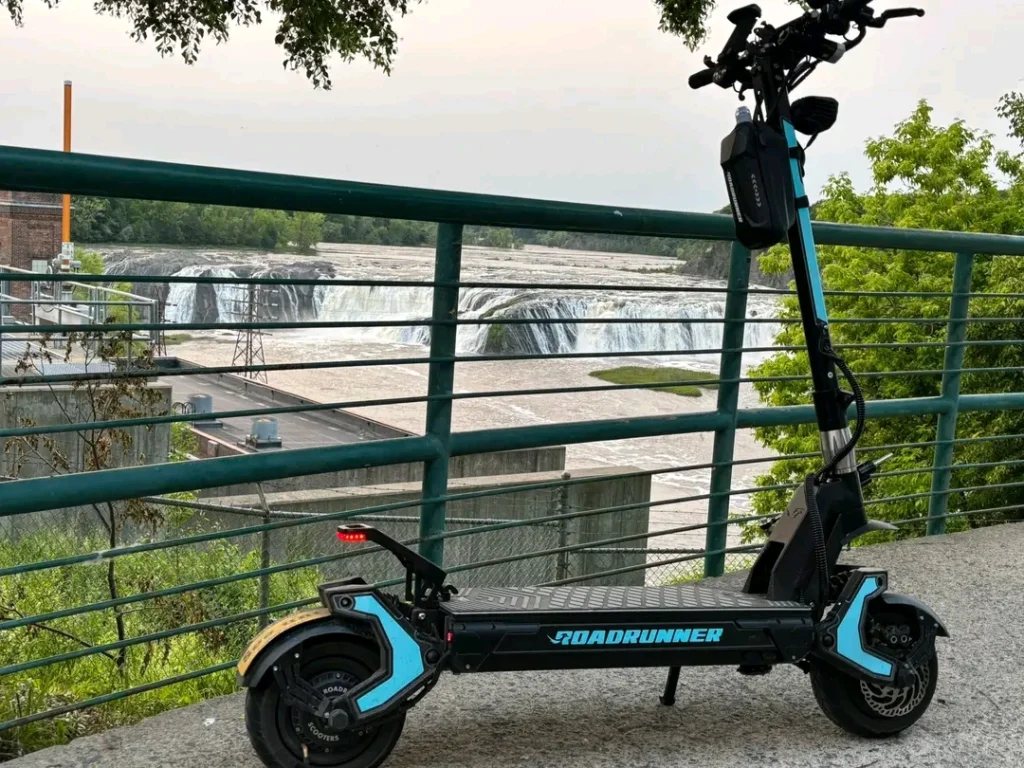
Hitting U.S. roads in mid-2024 with Denver-designed swagger, the RoadRunner RX7 blasted onto the scene as the “best-equipped production hyper-scooter” ever—dual 1,800W motors churning 3,600W total grunt, a removable 72V 40Ah Samsung battery for claimed 70 mph sprints and 70-mile jaunts, plus premium perks like Magura quad-piston hydraulic brakes, adjustable KKE shocks, and Italian PMT racing tires that gripped like glue.
At $3,899, it flaunted electroluminescent Lumilor paint for night-glow visibility, a massive deck for confident stances, and zero-upgrade-needed stock parts that had forums buzzing about dethroning Dualtrons as the ultimate thrill machine.
Early unboxings lit up YouTube with 0-30 mph in 3.6 seconds and hill-climbing torque that left commuters in the dust, crowning it America’s fastest-growing brand’s crown jewel. But by fall 2025, the RX7’s garage time outpaced road miles, as a torrent of owner horror stories drowned the hype in Reddit rants and BBB filings. What soured this star-spangled speed demon from showroom smash to service-center staple?
Regen Braking Backlash
The RX7’s adjustable regen braking, intended to recapture energy on descents and extend the 44-mile real-world range, backfired spectacularly, spiking currents that torched the rear motors, controllers, and cables within the first 100 miles.
Owners reported sudden shutoffs mid-ride, fused wiring belching smoke from brand-new units, and fried batteries stranding riders on highways, turning a fuel-sipping feature into a fire-starting fiasco.
Even mild settings couldn’t tame the surge, with one vet blaming it on underspecced electronics clashing with the scooter’s low-end torque beast mode.
In 2025’s eco-conscious crowd, this reliability roulette repelled range-hungry commuters who bailed for smoother sine-wave rivals, fearing a $1,000+ repair bill over a downhill perk, slashing sales to tinkerers willing to disable regen altogether.
Stem Shenanigans
Full-lock turns exposed the RX7’s folding stem as a wobbly weak link, with the mechanism shifting under torque and causing creaks that echoed like a loose bicycle chain on steroids.
Riders felt the deck pivot unnervingly during sharp maneuvers, amplifying that 142-pound heft into a top-heavy terror on urban weaves or trail switchbacks, while glued-on bolt covers blocked simple fender adds for splash protection.
Seasoned pilots griped it demanded constant tweaks with a proprietary oil wrench just to feel “solid,” but even tightened, the play persisted, eroding confidence in a scooter billed for precise, pro-level handling.
This everyday annoyance alienated weekend warriors upgrading from commuters, who traded it for stem-stiff alternatives amid 2025’s pothole-plagued streets, dooming the RX7 to “fun but finicky” status and stalling impulse upgrades.
EMOVE Roadster
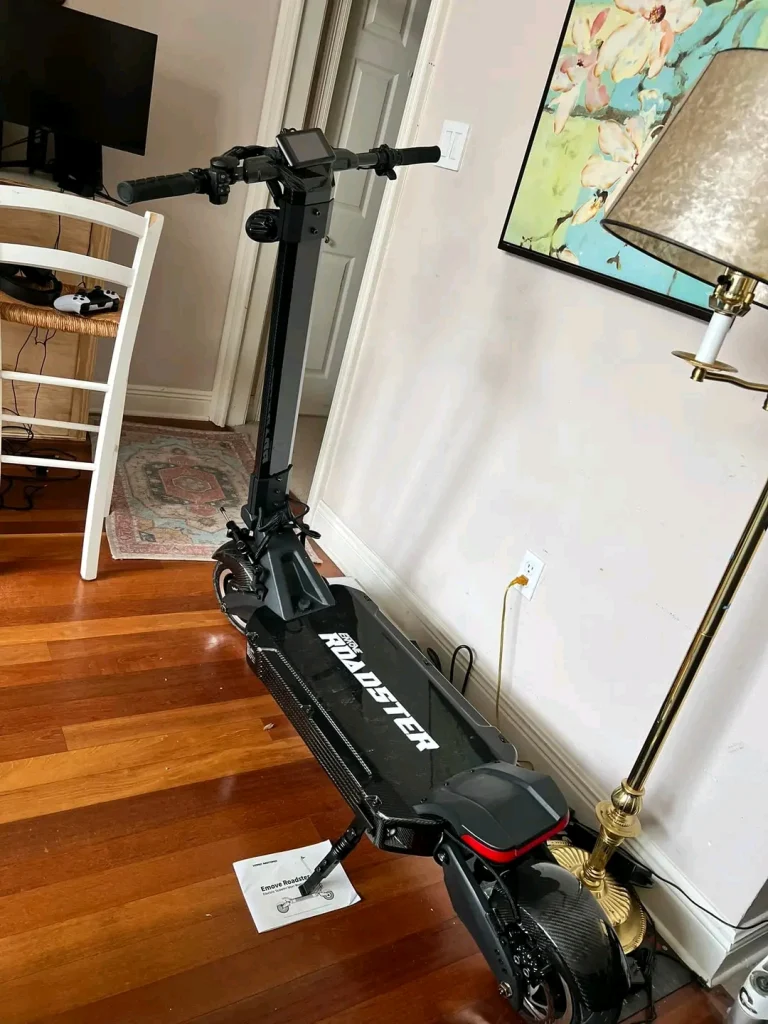
Unleashed in late 2023 with 2025 spec tweaks for realism, the EMOVE Roadster positioned itself as the pinnacle of hyper-scooter luxury.
Early rides sparked awe at its stability and torque, but by October 2025, sales skidded into stagnation—refurbished units flooded sites while new stock languished, as owners traded raves for repair rants.
This elite ride demanded more tweaks than triumphs. What luxury pitfalls parked the Roadster in the penalty box?
Parts Purgatory
Flagship status meant chronic backorders on essentials like controllers, dampers, and tires, with owners waiting months for fixes on out-of-box defects like misaligned graphics or fried motors that lit up the deck like a rave.
Strict 30-day warranty windows and opaque extended coverage processes compounded delays, turning “24/7 support” into email black holes and shipping sagas from California hubs.
In a plug-and-play market, these logistical logjams eroded trust among time-strapped commuters, who bailed for brands with stocked U.S. warehouses and seamless swaps.
Economic jitters amplified the frustration, pricing out impulse upgrades and funneling demand to dependable dealers over drama-prone darlings.
Brake Fade Fiasco
Magura MT5 calipers promised instant halts from highway speeds, but thin rotors warped after mere dozens of aggressive stops, causing pulsations and extended distances that shaved confidence from high-velocity joyrides.
Pads chewed through in weeks under the scooter’s mass and momentum, forcing $200+ aftermarket swaps just to match claims, while no regen option left energy wasted on descents.
Urban enforcers and safety sticklers shunned it amid 2025’s stricter audits, viewing the setup as a liability in rain-slicked cities where reliable braking trumps raw rush.
This high-wear headache alienated entry-level hyperscooter hopefuls, who pivoted to low-maintenance rivals and left Voro’s showpiece gathering garage dust.
Conclusion: Lessons from the Scooter Sales Slump
The electric scooter boom promised urban freedom and off-road thrills, but for seven hyper models: Hooga Daytona, YUME Predator, Dualtron Ultra 2, Teverun Supreme 7260R, GSPACE Mars 11 GTR, RoadRunner RX7, and EMOVE Roadster; the hype outran reality.
Priced like luxury cars, plagued by design flaws like wobbly stems or fading finishes, and tripped up by reliability issues from fried motors to scarce parts, these scooters misjudged a market craving affordability, durability, and daily ease.
Aesthetic missteps and safety scares further alienated style-savvy and cautious buyers, while supply chain snags left owners stranded.
As cities tighten rules and wallets tighten belts, these flops teach a clear lesson: raw power and flashy tech can’t outrun practical pitfalls.
For riders eyeing the next big thing, these cautionary tales demand scrutiny beyond the specs, because even the fastest dreams crash without a smooth ride.
